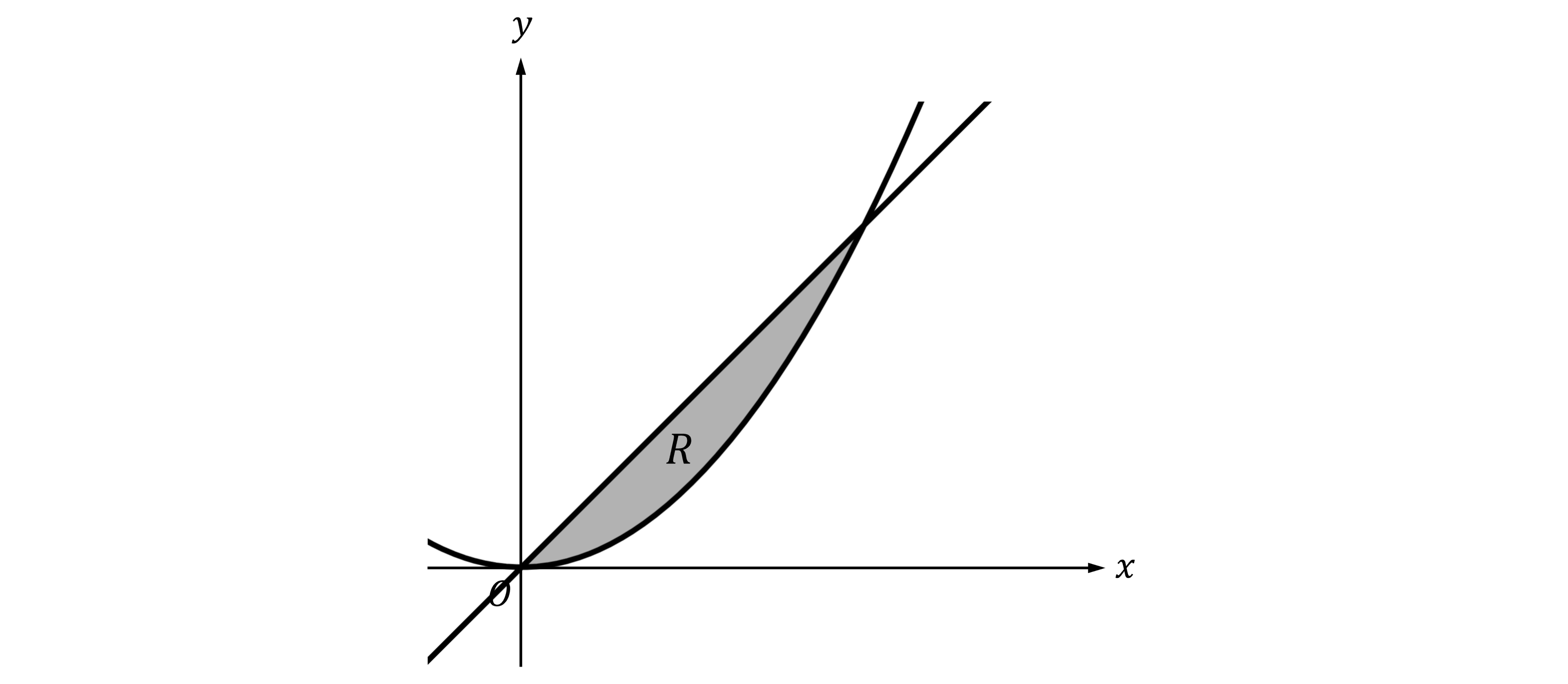Washer Method Around Other Axes (College Board AP® Calculus AB): Study Guide
Volume with washer method revolving around other axes
How can I use the washer method to calculate a volume of revolution around a line parallel to the x-axis?
Let
and
be continuous functions such that
on the interval
I.e.
is closer to the horizontal line
than
is on that interval
If the region bounded by
the curves
and
between
and
is rotated
radians
around the line
, then the volume of revolution is
Note that
and
are both functions of
Make sure that
is the curve further away from the line
and
is the curve closer to the line
If the curves 'swap places' over the interval
then split the calculation into separate integrals
If
and
are not stated in a question, these boundaries could involve
the
-axis (
)
and/or point(s) of intersection of the two curves
Worked Example
Let be the region enclosed by the graphs of
and
, as shown in the figure below.

Find the volume of the solid generated when is rotated about the horizontal line
.
Answer:
Use
To find and
, solve
to find the
-coordinates of the points of intersection of the two curves
So and
At ,
, so
is above region
in the diagram
Therefore is the function closest to the line
, so use
and
Set up and solve the integral
The question doesn't specify units, so the units of volume will be
56.968 units3 (to 3 decimal places)
How can I use the washer method to calculate a volume of revolution around a line parallel to the y-axis?
Let
and
be continuous functions of
such that
on the interval
I.e.
is closer to the vertical line
than
is on that interval
If the region bounded by
the curves
and
between
and
is rotated
radians
around the line
, then the volume of revolution is
Note that
and
are both functions of
If the functions are given as functions of
e.g
and
then you will need to rewrite them as functions of
See the Worked Example
Also note that the integration is done with respect to
Make sure that
is the curve further away from the line
and
is the curve closer to the line
If the curves 'swap places' over the interval
then split the calculation into separate integrals
If
and
are not stated in a question, these boundaries could involve
the
-axis (
)
and/or point(s) of intersection of the two curves
Worked Example
Let be the region enclosed by the graphs of
and
, as shown in the figure below.

Find the volume of the solid generated when is rotated about the vertical line
.
Answer:
Use
First rewrite the functions as functions of
Note that is used instead of
because it can be seen from the graph that the
values of the relevant part of the curve are positive
The line is to the left of region
in the diagram
Therefore is the function closest to the line
, so use
and
To find and
, solve
to find the
-coordinates of the points of intersection of the two curves
So and
Set up and solve the integral
The question doesn't specify units, so the units of volume will be
67.021 units3 (to 3 decimal places)

Unlock more, it's free!
Did this page help you?